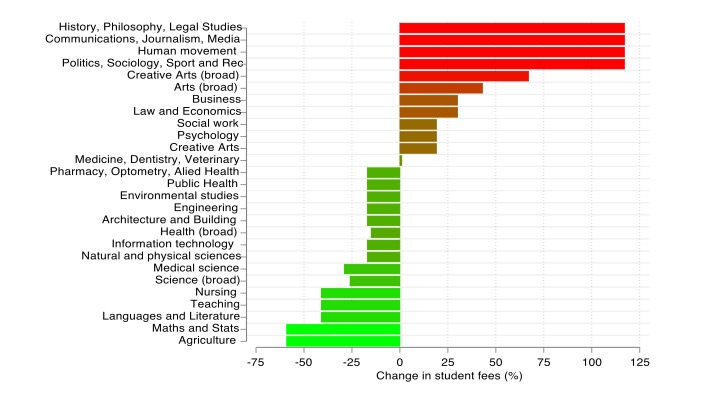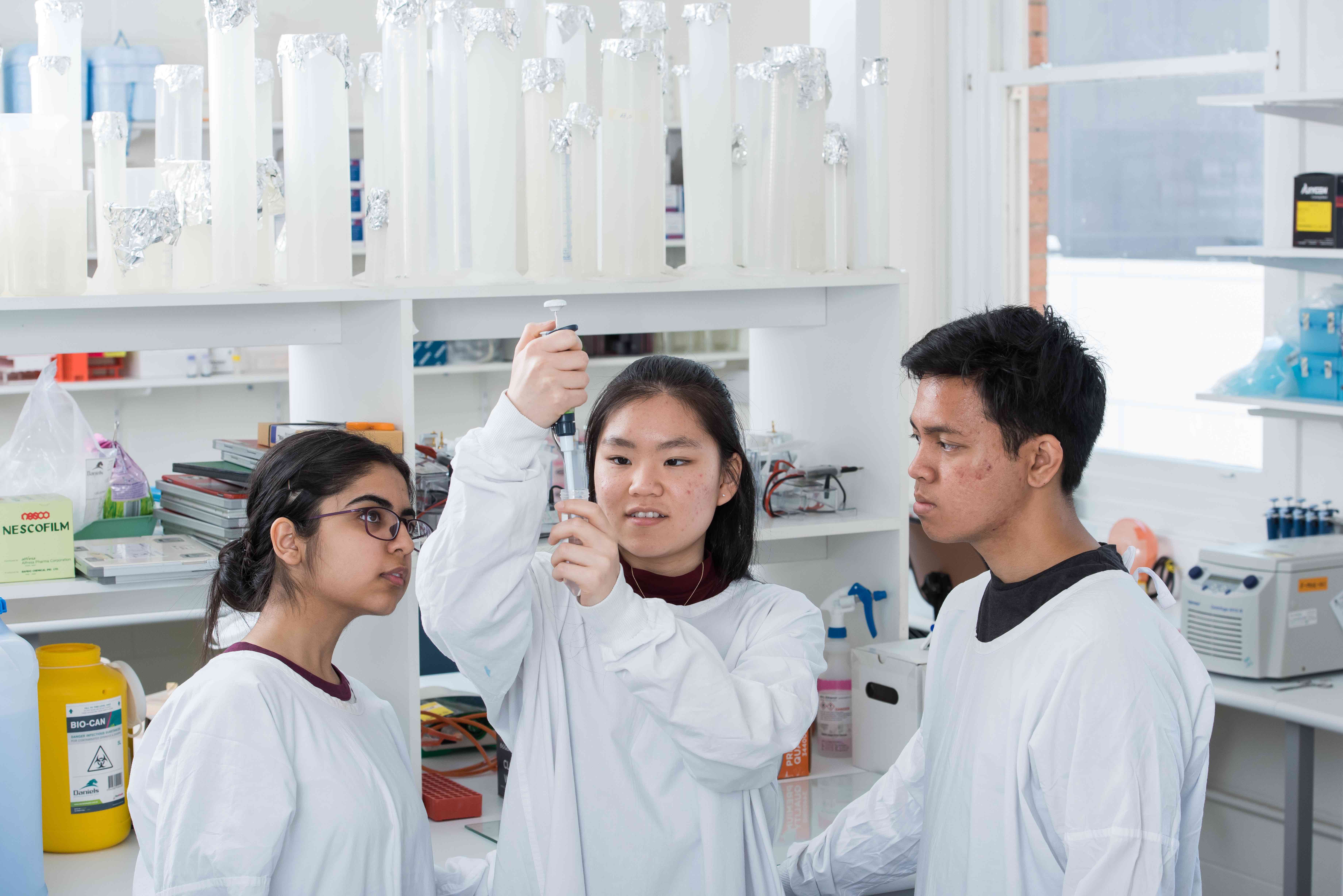
Changing the cost of some uni degrees didn’t change students’ minds

New research finds that hikes in the cost of some university degrees had limited impact on students’ choices
Published 6 December 2023
In 2021, the Morrison Government introduced the Job-ready Graduates Package. If you haven’t heard of it or don’t remember the announcement, the policy aimed to steer university students away from “low demand” fields of study – like history and journalism – and into “high demand” fields – like nursing, teaching, computer programming and engineering.
The idea was to address Australia’s skill shortages by funnelling students towards areas considered vital to the economy. The announcement sparked debate about whether the change was an ideological jab at the arts.

The package saw fees for “low demand” fields rise by up to 117 per cent, and the fees for “high demand” fields drop by as much as 59 per cent.
At the time, the then-Government believed these big financing changes were bound to affect student choices. But did they?
Our research has found that the impact of the reforms was modest at best.

Passion vs payment
We looked at the field preferences and final enrolments of more than 725,000 Australian students applying for Bachelors’ degrees in New South Wales and the Australian Capital Territory.
We analysed their responses to the fee changes to find out whether students increased their preferences for fields that became cheaper and reduced preferences for fields that became more expensive.
The data showed that student responses were quite limited.
Take mathematics and statistics as an example. Despite the fact that this field was subject to the largest drop of student fees (59 per cent), only one out of every 2000 students responded by changing their preference to this area of study.

When we look across all fields, only around 1.5 per cent of all students changed their preferences in response to the reforms.
This is perhaps not surprising, as students do not have to pay university fees up-front. The Higher Education Contribution Scheme (HECS) allows students to spread repayments and put them on hold if their income is too low (currently below $AU51,550).
Many students also choose courses based on their passions rather than on the associated fees. And it’s important to remember that passionate workers are productive workers.

Politics & Society
Universities can’t forget about lower socio-economic students
Big repercussions
While we found only modest responses to these large fee changes, this doesn’t mean that students are unaffected. Because of these reforms, many of them will accumulate much larger HECS debts.
For a three-year journalism degree, the debt grows from around $AU20,000 to $AU43,500. For a mathematics degree, the debt falls from around $AU28,600 to $AU11,850. The new difference in debts ($AU31,650) is more than triple the old difference ($AU8,600).
Is this fair?
Higher debts mean more years of repayments. And longer repayment times may mean delaying buying a home or starting a family.

The downstream effects of these changes are likely to grow over time, giving rise to entrenched inequality among university graduates. These consequences will be particularly dire for graduates in fields associated with lower earning prospects, like the performing arts, media and journalism.
In fact, these reforms overturned 25 years of university fees reflecting the earning prospects of graduates.
Those likely to earn more post-graduation (like lawyers, doctors and financiers) paid more to study, and those likely to earn less (like arts, nursing and teaching), paid less.

Politics & Society
Australia’s universities must become more welcoming
Let students decide
One early criticism of the reforms was that they created perverse incentives for Australian universities due to the knock-on effects on university revenues.
The universities could increase their revenues by lowering the entry requirements for “low demand” fields, accepting more students into these fields, and collecting the higher fees per student.
Similarly, their incentive for increasing enrolments in “high demand” fields – like nursing – was affected by the annual revenues per nursing student falling by around $AU1,300.
It is worth noting that government subsidies could have been used to offset these incentives, but such offsets were largely incomplete in the Job-ready Graduates Package.

Despite this, our research shows that universities did not “take advantage” of the reforms by increasing enrolments in fields with rising fees.
These reforms also didn’t drastically change student enrolments by making it more difficult for students to get a spot in their field of choice. At the same time, it might be the case that these changes are yet to take place.
Then there’s the university accord
In November 2022, the Albanese Government commissioned The Universities Accord – an independent review into Australia’s higher education system.

The Accord provides an opportunity to reset the way universities are funded.
To do this, the Accord needs to work toward three key outcomes: better access to higher education, improved quality and greater fairness.
Its final report should detail key policies and initiatives to address these outcomes, ensuring bang-for-buck for the Australian taxpayer.
It is crucially important for Australia to have skilled workers ready and willing to be nurses, teachers and engineers, but also artists, journalists and historians – but increasing HECS debts for some and reducing them for others isn’t the best way of achieving this aim.
Banner: Getty Images


